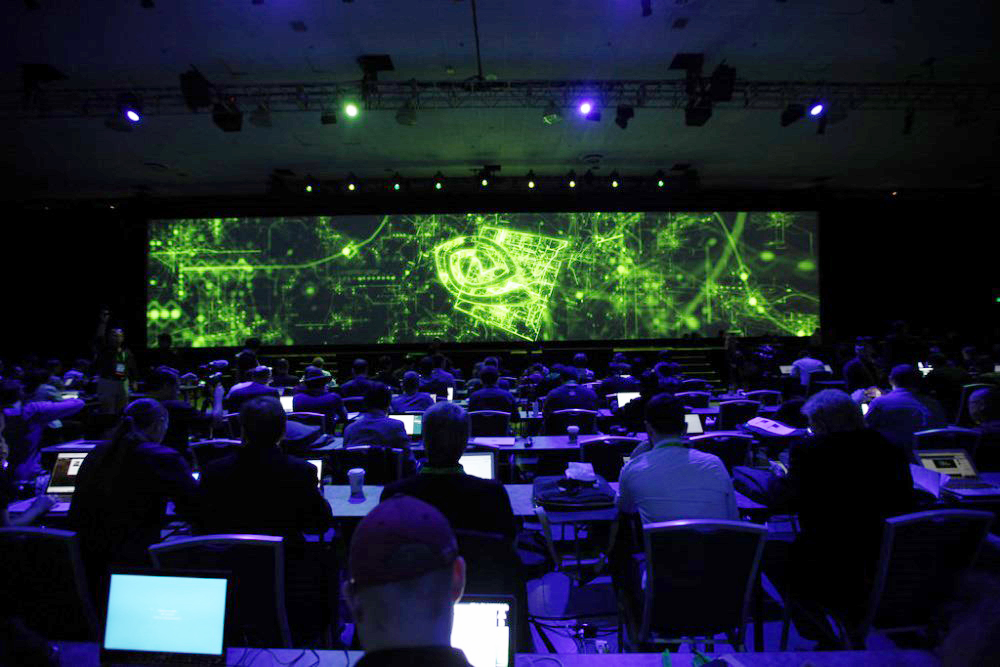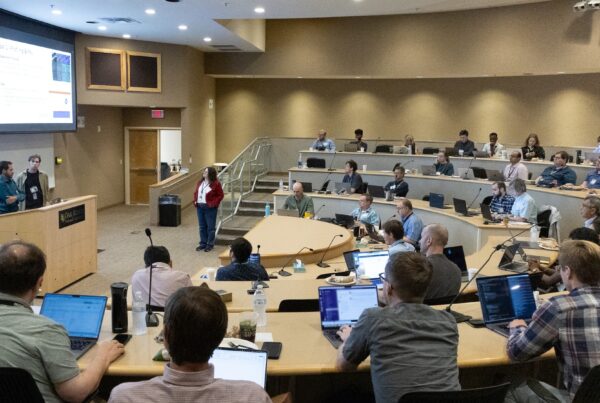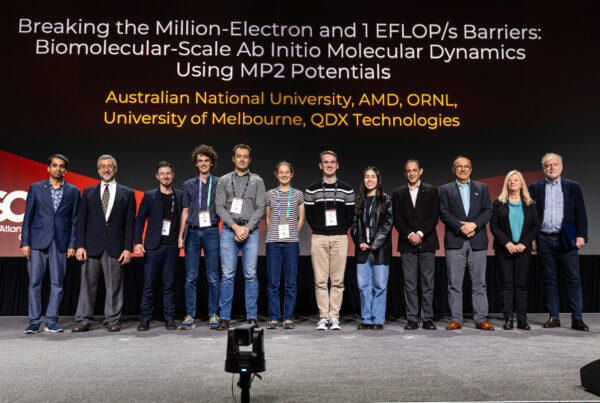
Conference attendees prepare for NVIDIA CEO Jen-Hsun Huang’s keynote speech at the seventh annual GPU Technology Conference (GTC) in San Jose, CA. OLCF staff members have always been active participants in GTC. The conference allows OLCF staff to develop relationships with users, support vendor partners, and teach best practices for using heterogeneous supercomputing resources. Image credit: NVIDIA.
Every year technology vendor NVIDIA hosts the GPU Technology Conference (GTC). The event brings together developers, programmers, and researchers from government, academia, and industry to share ideas on how to further improve GPU technology and how it is integral to accelerating high-performance computing (HPC).
Since acquiring the Cray XK7 Titan supercomputer in 2012, staff members at the US Department of Energy’s (DOE’s) Oak Ridge National Laboratory (ORNL) have become thought leaders in GPU technology due to Titan’s unique role as the largest GPU-accelerated supercomputer in the world.
As increasingly more researchers turn to GPU technology to accelerate scientific discovery, staff at the Oak Ridge Leadership Computing Facility (OLCF), a DOE Office of Science User Facility located at ORNL, have played an active role in education, training, and panel discussions at GTC.
“GTC is the place to go to find developers doing great science on GPUs,” said OLCF user support specialist Fernanda Foertter. Foertter participated in the 2016 GTC conference, which took place April 4–7 in San Jose, California.
During the 4-day event, Foertter led a session about writing portable code and discussed best practices for writing such codes. These sessions highlighted the OLCF’s efforts to train users for Titan and prepare applications for Summit, the center’s next supercomputer, slated to be delivering science in 2018.
“DOE finds it important to help the health of the HPC ecosystem, and to that end it has purposely chosen diverse architectures for the next generation of pre-exascale supercomputers,” Foertter said. “Therefore, portability across current and future architectures is important.”
In addition to leading the portability session, Foertter participated in a panel discussion about OpenACC, a directive-based programming model that simplifies programming with accelerator-based systems. Part of this discussion centered on something close to Foertter’s heart—GPU hackathons. These events, of which Foertter has helped organize eight, aim to train users on how to properly use GPU programming models like OpenACC and to generally debug and optimize their codes for hybrid architectures.
In addition to Foertter, a team consisting of researchers at Total, one of the world’s largest petrochemical companies, and ORNL researcher Oscar Hernandez presented its findings on using OpenACC to parallelize the team’s code to run better on Titan. Improvements to the team’s code allow Total researchers to more effectively analyze seismic depth imaging for more efficient oil and gas recovery. For more information on Total’s work with the OLCF, please visit https://www.olcf.ornl.gov/2016/05/31/olcf-total-partnership-bolsters-simulation-strength-for-oil-and-gas-industry-2/.
OLCF computational scientist Benjamin Hernandez also participated in the conference. He presented a talk titled, “GPU Accelerated Markov Decision Process in Crowd Simulation.” In addition, he also presented a poster titled, “A Rasterization-Based Line Segment Intersection Algorithm for Urban Mobility Simulation.” The latter was a collaboration with Cheng Liu of ORNL’s Geographic Information Science and Technology group.
Oak Ridge National Laboratory is supported by the US Department of Energy’s Office of Science. The single largest supporter of basic research in the physical sciences in the United States, the Office of Science is working to address some of the most pressing challenges of our time. For more information, please visit science.energy.gov.





